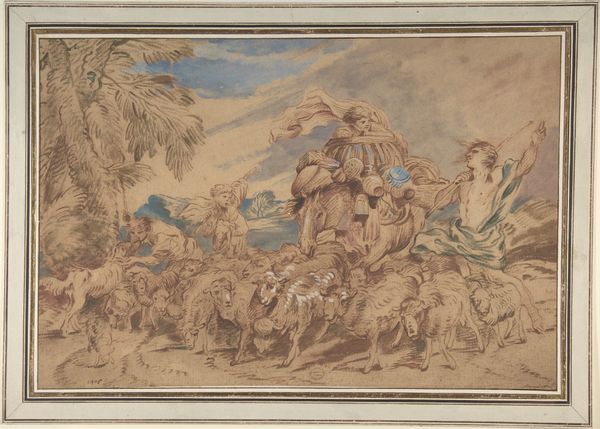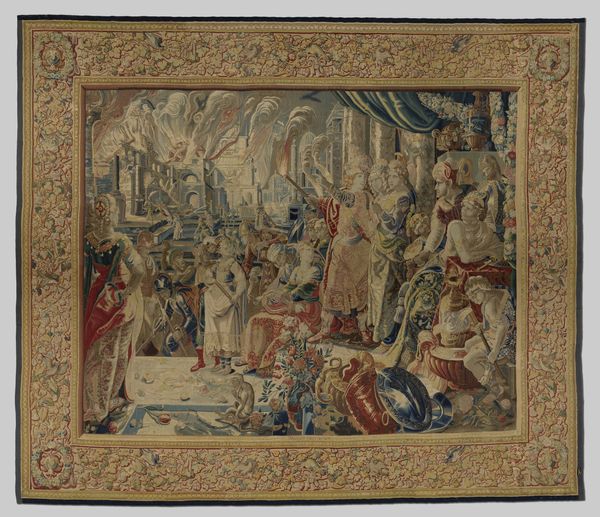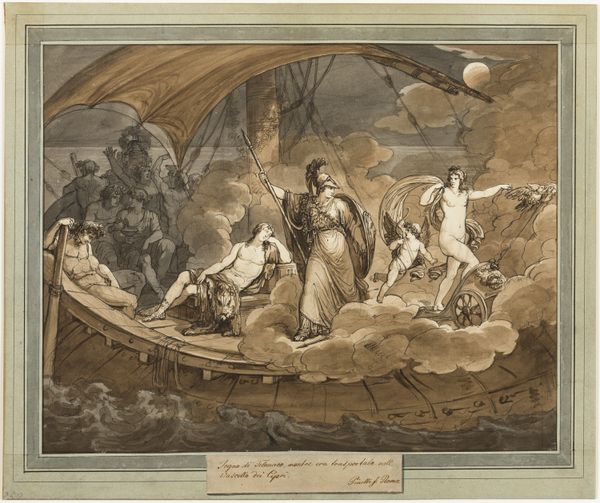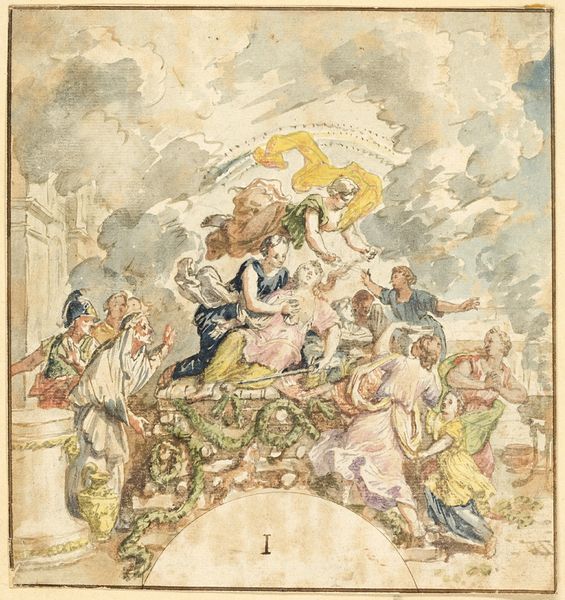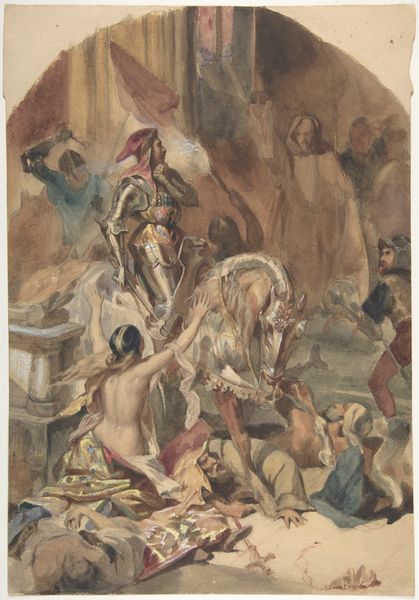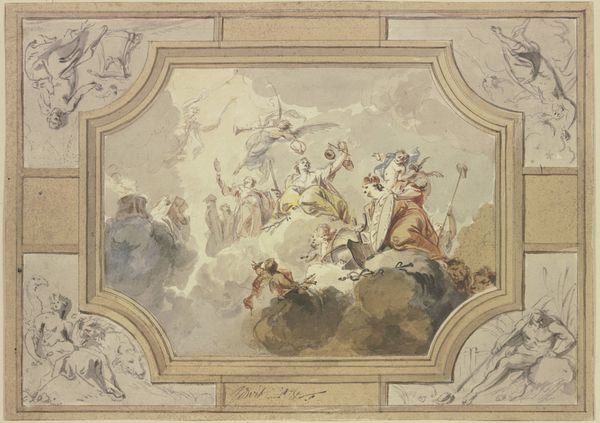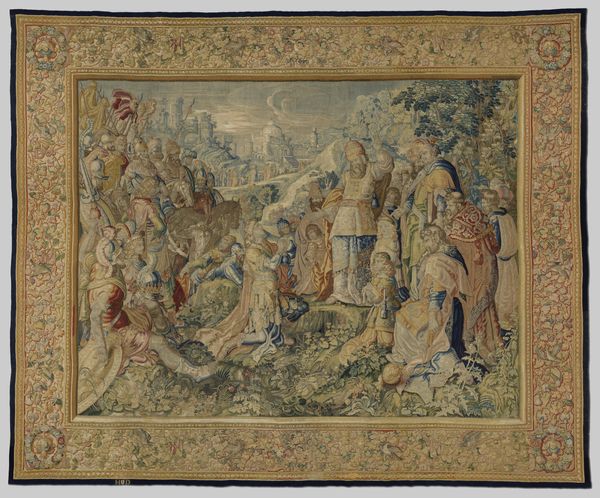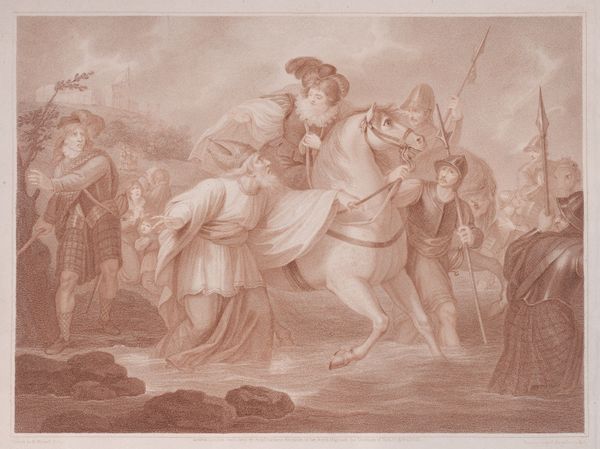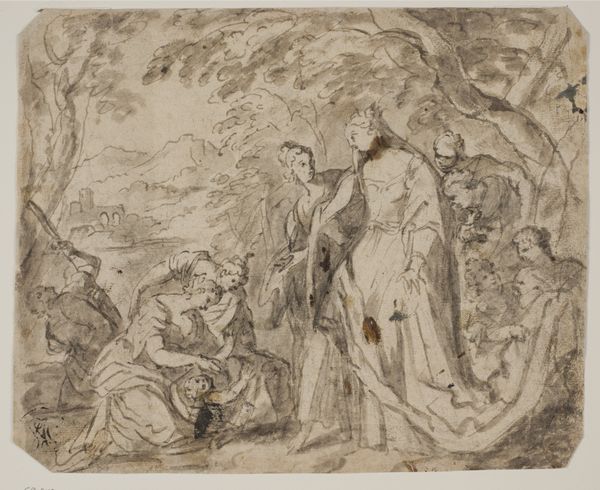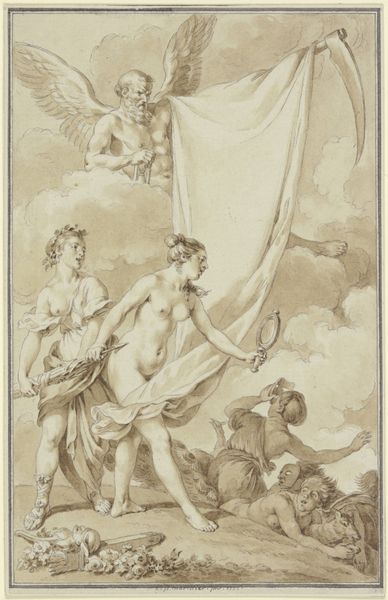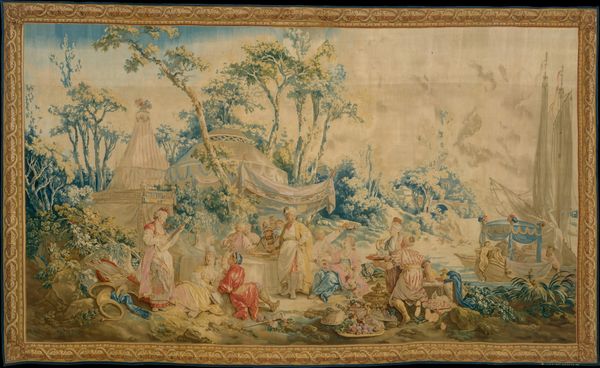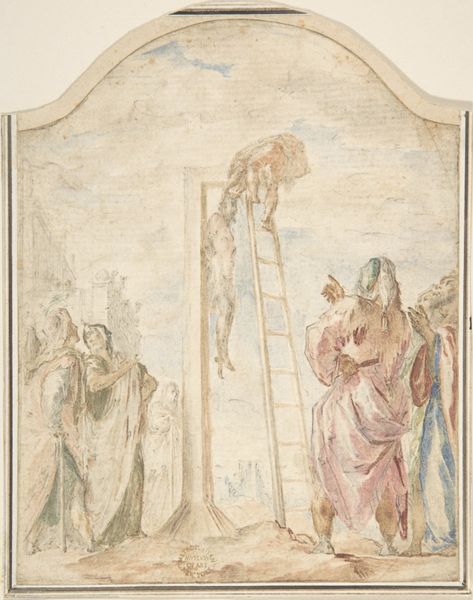
Allegorie auf die Confédération Rhenane oder besser auf das Lager von Boulogne und die beabsichtigte Invasion in England
drawing, gouache, paper
drawing
allegory
gouache
landscape
paper
romanticism
history-painting
Copyright: Public Domain
Curator: What leaps out at you first in this composition? For me, it’s the chariot—sort of grandiose and terrifying at once. Editor: Absolutely. The light almost feels violent as it pours onto those rearing horses. Is this supposed to be a triumphant scene? There's something deeply unsettling about it. Curator: It’s meant to be! We’re looking at "Allegory of the Confederation of the Rhine or rather the Camp of Boulogne and the Planned Invasion of England," a gouache and ink drawing by Charles Johannot. The piece reflects a very specific moment in early 19th-century history, capturing Napoleon’s ambitions and, well, slightly overstating their inevitability, perhaps. Editor: An allegory. Right. That explains the, shall we say, theatrics. But unpack it for me; who are all these characters playing? Curator: You have Napoleon himself in the chariot, poised for action. And, of course, allegorical figures all around. We see a figure writing about Napoleon's achievements surrounded by children depicting fine arts. The female figure closest to Napoleon is wearing the Aegis, shield of Zeus, symbolizing Minerva- Athena- military victory. Angels crown him. The whole drawing suggests power and military glory, that kind of imagery so dear to Napoleon's heart. Editor: And a heavy dose of propaganda, no doubt. Looking at the style, this definitely leans into Romanticism, doesn't it? The drama, the heightened emotion... almost cartoonish. Curator: The drama is pure Romanticism. You can also see in its idealized vision, the theatrical staging of history. Even the medium contributes, those shimmering gouache tones evoke a dreamlike, almost hallucinatory quality. The drawing technique, particularly the way the light is rendered, adds to that otherworldly feel, that romantic license to exaggerate for effect. Editor: It’s funny how an image meant to project strength ends up revealing anxiety. All that excess, it's almost screaming, "Look how powerful we are! Please believe it!" Curator: Exactly. Maybe Johannot captured something he didn't intend. Now, seeing this as part of the Städel Museum collection in Frankfurt it gains another layer of irony, no? Editor: A French vision of grandeur, safely preserved in a German museum. It just adds to the layers of history folded into this piece. It’s interesting how this work reflects, beyond any propagandistic intent, an awareness of how these characters and stories become intertwined across contexts.
Comments
No comments
Be the first to comment and join the conversation on the ultimate creative platform.
